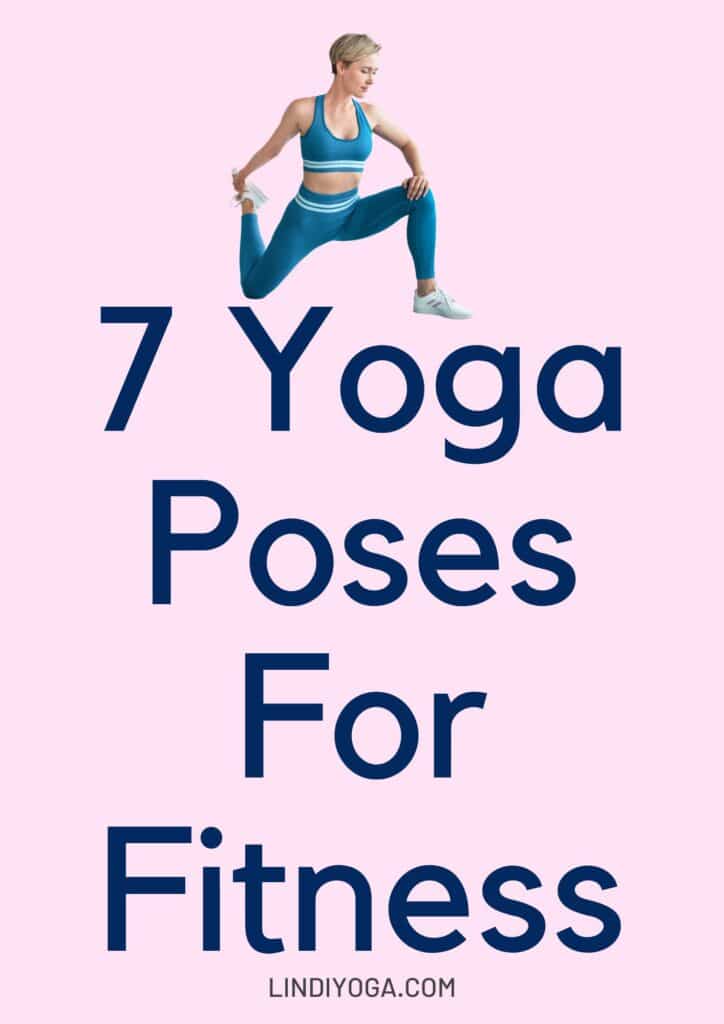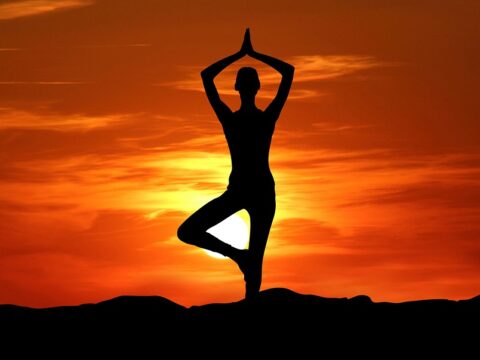Yoga and fitness are an excellent match. Yoga is a great way to improve your fitness and strengthen muscles, but it can also have a mental impact. This is because yoga exercises affect your body and mind.
Therefore, it is important that you find a type of yoga that you enjoy. It’s also important to find a yoga practice that gets your heart pumping and challenges your muscles. Once you find the right yoga practice, however, you need to follow through with it consistently.
If you have never practiced yoga before, be sure to consult your doctor before starting a yoga program. Some poses may not be suitable for you, especially if you are pregnant or have a health problem.
Podcast
However, a gentle yoga program can be beneficial for people with certain health conditions, such as arthritis. It can help them maintain flexibility and strength and improve their posture.
Another benefit of yoga is its ability to improve your breathing. It has been shown to improve vital capacity, the maximum volume of air expelled from your lungs after you have exhaled all the air.
A study conducted by Ball State University found that participants who practiced yoga had higher lung capacity. This increased lung capacity can help you reach your fitness goals.
Yoga not only relieves stress, but it’s also a great way to improve your overall health. Regular yoga practice can help you tone your body, improve your posture, and even lower your risk of injury.
What is fitness?
Fitness is the state of physical well-being and physical performance. People who are physically fit are able to perform everyday tasks.
Generally, physical fitness is achieved through adequate rest, moderately strenuous exercise, and proper nutrition. Some people also follow a formal recovery program to achieve their goal of physical fitness.
Being physically fit has many benefits. You look better, feel better, and have more energy. You are also more likely to maintain a more active lifestyle.
Fitness goals should be reasonable and attainable so you can achieve them. And they should be part of an overall active lifestyle. This will help you maintain your physical fitness.
There are many exercises and routines that can help improve your overall health. The most effective way to improve overall body flexibility is to do a daily stretching exercise.
Cardiorespiratory fitness
Cardiorespiratory fitness is an important part of a healthy lifestyle. To improve your cardiorespiratory fitness, it is important to exercise regularly.
You can start with a light workout and then increase the intensity of the workout. A general rule of thumb is to start at 55% of your maximum heart rate and then work your way up to that level over time. Aim for at least 20 minutes of moderate exercise per day.
Your cardiorespiratory fitness can be measured with two important tests: Peak oxygen uptake (VO2 max) and mitochondrial function (MCF).
The first test involves sitting on a stationary bike, while the second test measures your lung strength during and after an exercise session. It is important that you see a physician before taking either of these tests.
Cardiorespiratory fitness is an important factor in preventing heart disease and other health problems. It is primarily determined by aerobic endurance exercise, but muscle strength training can also contribute to cardiovascular health.
Increasing physical activity has also been associated with a lower risk of CHD-related mortality. Despite these benefits, the link between cardiorespiratory fitness and physical activity is still controversial. This is because it is difficult to determine daily physical activity and energy expenditure.
It is important to know that cardiorespiratory fitness can be easily measured with a simple test, such as VO2 max.
Another way to measure cardiorespiratory fitness is to perform a CPX test. This test is usually performed on a stationary bike and measures oxygen levels, carbon dioxide production, and breathing patterns.
This method is standardized and accurate, making it a useful tool for measuring CRF. If you are undergoing a CPX test, be sure to warm up thoroughly before the test.
Then, exercise at a moderate pace for twelve minutes and record your mileage.
Muscular Fitness and Health
Muscular fitness is the ability to maintain a constant level of physical activity. It is related to health in many ways, including a lower risk of many chronic diseases and injuries.
It is even required for certain types of athletic activities and is critical to overall health. Muscular endurance training increases muscle strength by increasing the amount of time a muscle can withstand a prolonged contraction.
This type of training uses a variety of techniques, including increasing repetitions and isometric holding exercises.
Beginners should only lift a few pounds at first, but over time they can increase the weight and number of repetitions. This will improve their muscular fitness and they will be surprised by the results!
Muscular training should be done two to three times a week, with one to three days between workouts.
Muscular fitness training involves exercises that build power, endurance and strength. They require the use of all major muscle groups and are an essential part of a comprehensive fitness program.
As you increase your muscular strength, you will be able to lift heavier weights. Muscular fitness training also improves the overall health of your body.
The progression of your exercise program depends on the goals you set for yourself. You can add more weights, do more sets, or change equipment.
Gradual changes help keep your workout challenging and fun.
The importance of flexibility
Flexibility is a property of range of motion. It refers to the range of motion of the muscles and connective tissues, although it relates more to the joints. Improving flexibility is an important part of maintaining good health.
Studies show that increased flexibility has a positive impact on health. Not only does it promote optimal health, but it also reduces the risk of pain and injury.
Stretching your muscles regularly improves flexibility. It helps prevent you from becoming stiff from sitting in one position or repetitive movements.
It also helps relieve stress and anxiety. It also improves blood circulation and reduces pain in muscle groups. Don’t forget to stretch after endurance exercises, as this will make your muscles more supple.
The key to increasing your flexibility is to understand how your body is built and what limits your range of motion. For example, the size of your hamstrings can limit your knee’s range of motion.
Excess fat tissue can also limit your range of motion. When you increase your range of motion, you improve your posture and reduce your risk of overuse injuries.
The importance of body composition
Body composition is an important indicator of overall health and fitness. The amount of fat in your body is one of the most important factors that determines your risk for chronic disease. The bathroom scale may not be able to tell you, but a body composition test can.
This type of test determines your percentage of total fat, which is more accurate than weight alone. In general, a healthy body fat percentage is between 10 and 20 percent for men and 18 to 28% for women.
A healthy body composition consists of a balance of muscle and fat. It is important for long-term health.
Adequate muscle mass helps the body ward off disease, supports proper posture and improves mobility.
It can also prevent you from becoming frail as you age. Knowing your body composition can also help you develop a more personalized fitness and nutrition plan.
Modern body composition measurements are available to most people, so they can be easily integrated into clinical settings and research. However, there are some limitations to using these measurements.
Some measurements are not accurate enough, while others may be too complex. In addition, it is unlikely that a single method will be best for every person.
Changes in body composition require discipline and time. You should repeat your measurements every 8-12 weeks, or more frequently if you use a home body composition scale.
The results of your initial measurements may not be perfect and may require adjustments to your fitness and dietary habits.
Diet has the biggest impact on body composition, so it’s important to know your calorie needs and track your nutrition.
7 yoga postures for fitness
Virabhadrasana I (Warrior I Pose)
Warrior I Pose is a strengthening fitness pose that stretches the arms, chest and legs. It also strengthens the back muscles and helps improve circulation. Although not ideal for backbends, this pose is a good choice for people with back pain.
While the front leg is the main focus in Warrior I, the back leg is also crucial.
It is important to keep the back leg straight to protect the knee and provide stability. The straight back leg also helps direct energy forward. Therefore, many people find this posture challenging.
When practicing Warrior I Pose, it is important to focus on the inner strength of the body. This pose strengthens the back, legs and hips and teaches the practice of balance and alignment.
Named after the fierce warrior, this pose has a powerful message that can help you overcome your ego and find the strength to face life’s challenges.
Warrior I pose can strengthen your focus, balance and concentration. If you practice it properly, it can make you stronger in all areas of your life.
Vrksasana (Tree Pose)
Tree pose is a balancing asana. Balance is also important in fitness. It was one of the few standing poses in hatha yoga and is still popular today.
It is a great way to improve your strength and flexibility. This pose can be done in a variety of positions, including sitting and standing.
This pose can be very challenging, but it helps you develop balance and poise.
This pose exercises the hip flexors and shoulders, and gives you the feeling of standing with your feet and back on the floor.
To practice the tree pose, you need to be aware of your body’s needs and limitations. For this reason, it is not suitable for people with physical ailments such as vertigo or migraines.
People with knee or hip arthritis should also avoid this pose. People recovering from a prolonged illness should also be especially careful when performing the Tree Pose.
For example, one foot should rest on the floor. The other foot can be placed on a block. The upper body should be slightly elevated and the tailbone should face the floor. Remain in this posture for a few seconds. Performing this posture correctly will increase the effectiveness of the asana and reduce the risk of injury.
Vrksasana tree pose not only promotes balance and stability, but also helps relieve stress and anxiety. It is also a great way to open the chest and strengthen the shoulder muscles.
Utthita Trikonasana (Extended Triangle Pose)
Trikonasana is an important yoga pose that activates the pelvis, hips and inner hamstrings. The pose also challenges the hip adductors, strengthens the legs and improves stability. Its main focus is on the pelvis and it is performed with the legs extended.
Trikonasana is a transitional pose. You can use it in a variety of power yoga or vinyasa sequences. Once you have mastered this pose, you can quickly move on to other poses such as Warrior Poses.
The Extended Triangle Pose is a challenging yoga pose. It stretches the hips, hamstrings and groin as well as the shoulders and chest.
It also stimulates the abdominal organs and relieves lower back pain. It is also helpful for people suffering from low blood pressure, neck injury or heart disease.
Depending on your height, you can change the position in different ways. Some yogis support their upper body and legs with their forearms. Try to open your chest as much as possible while holding the position. You don’t want to feel tense.
Triangle Pose is beneficial for people who suffer from sciatica. It strengthens the back, thighs and hips and improves the flow of digestive juices through the body. This pose is also good for the root chakra and balance.
Adho Mukha Svanasana (Downward Looking Dog)
Downward facing dog pose, also known as Adho Mukha Shvanasana, is a widely used inversion asana. It is commonly performed in yoga as part of a flowing sequence of poses known as Surya Namaskar.
The downward facing dog pose is a powerful pose that stretches the entire body. It helps relieve back pain and strengthens the arms. It is also good for preventing osteoporosis. In addition, it can help with various health problems such as asthma, menopause and flat feet.
Downward facing dog is a challenging posture that can feel difficult at first. It requires patience, practice and perseverance.
However, with time, you will master this posture and feel pleasure throughout your body. Just remember to always keep your balance. Finding the right balance between your feet and your hands will help you achieve a balanced practice.
This basic yoga pose is a great way to strengthen your chest, arms and back. It also stretches the hips and thighs. It also helps to alleviate back pain and relieve sciatica. In addition, it is an excellent starting, transitional and resting position.
The downward facing dog pose lengthens the spine, strengthens the chest muscles and increases lung capacity. It is also helpful for mild depression and anxiety.
In addition, this posture is believed to activate the Manipura Chakra, which helps to dispel anxiety. It also stimulates the Ajna Chakra, which promotes awareness.
Navasana (Boat Pose)
Navasana, also called naukasana or boat pose, is a seated yoga asana. In modern yoga, it is one of the most popular poses and an important part of the practice. It also has many other names, including Paripurna Navasana.
The goal of this yoga pose is to cultivate balance and strengthen the arms and torso.
The arms and torso form a V-shape. The legs form a stable boat.
To practice this yoga pose, you need to start in Navasana and then slowly lower your body to the floor. Once you are in this position, round your upper back and squeeze your inner thighs together. Now bring your big toes close together. You should now be ready for boat pose.
The benefits of this yoga pose are numerous. It strengthens the abdominal muscles and helps prevent stress and anxiety. It is also helpful for improving digestion and regulating the thyroid and prostate glands.
It improves mental clarity and relieves stress. It also helps the spine and kidneys to function properly.
Boat pose is an excellent pose that strengthens core strength. It also stretches the deep hip flexors, which can weaken if we sit too much. It can also help improve balance.
Setu Bandha Sarvangasana (Bridge Pose)
Bridge Pose is an important fitness asana that promotes strength and flexibility of the upper body. This yoga pose requires the body to bend from the waist to the hips, creating a backbend that stretches the entire spine. In addition, it strengthens the abdominal muscles. There are several ways to perform this pose.
This pose helps to build core strength, stretch the spine and stimulate the nervous system. It can be challenging and is not for everyone.
People with recent or chronic injuries or neck pain should not practice this pose. It is important to release the pose if you experience pain or discomfort.
Bridge pose is also good for the digestive system. It helps stretch and massage the thoracic spine and abdominal organs.
It also helps with respiratory problems. It helps to prevent varicose veins. It also strengthens the leg muscles and can help with leg pain and weakness.
The bridge pose should be done carefully and avoided by people with back or neck injuries. It should also not be practiced by people with facet syndrome or severe osteoporosis.
To perform the pose safely, it is important to consult a yoga instructor who is familiar with the anatomy.
Phalakasana (Plank)
Yoga Plank Pose another powerful fitness asana that strengthens the abdominal muscles and shoulders. Yoga Plank Pose is a powerful asana that strengthens the abdominals and shoulders. It is also useful for toning the abdominal muscles and rejuvenating the waist.
In yoga, this pose should be taken after Adho Mukha Svanasana. It can be followed by downward facing dog pose or upward facing dog.
There are many variations and positions of Plank Pose. Practicing this pose in different ways will strengthen your entire body.
It works the pelvic floor muscles, the transverse abdominal muscles, the gluteal muscles and the quadriceps. It also protects your lower back and supports your joints.
Plank poses improve your posture, which is important for overall health. Proper posture helps prevent chronic pain, uneven weight distribution and even injury.
By strengthening various muscles and skeletal areas, the Plank pose improves balance and posture. Plank also increases bone density and helps prevent osteoporosis.




